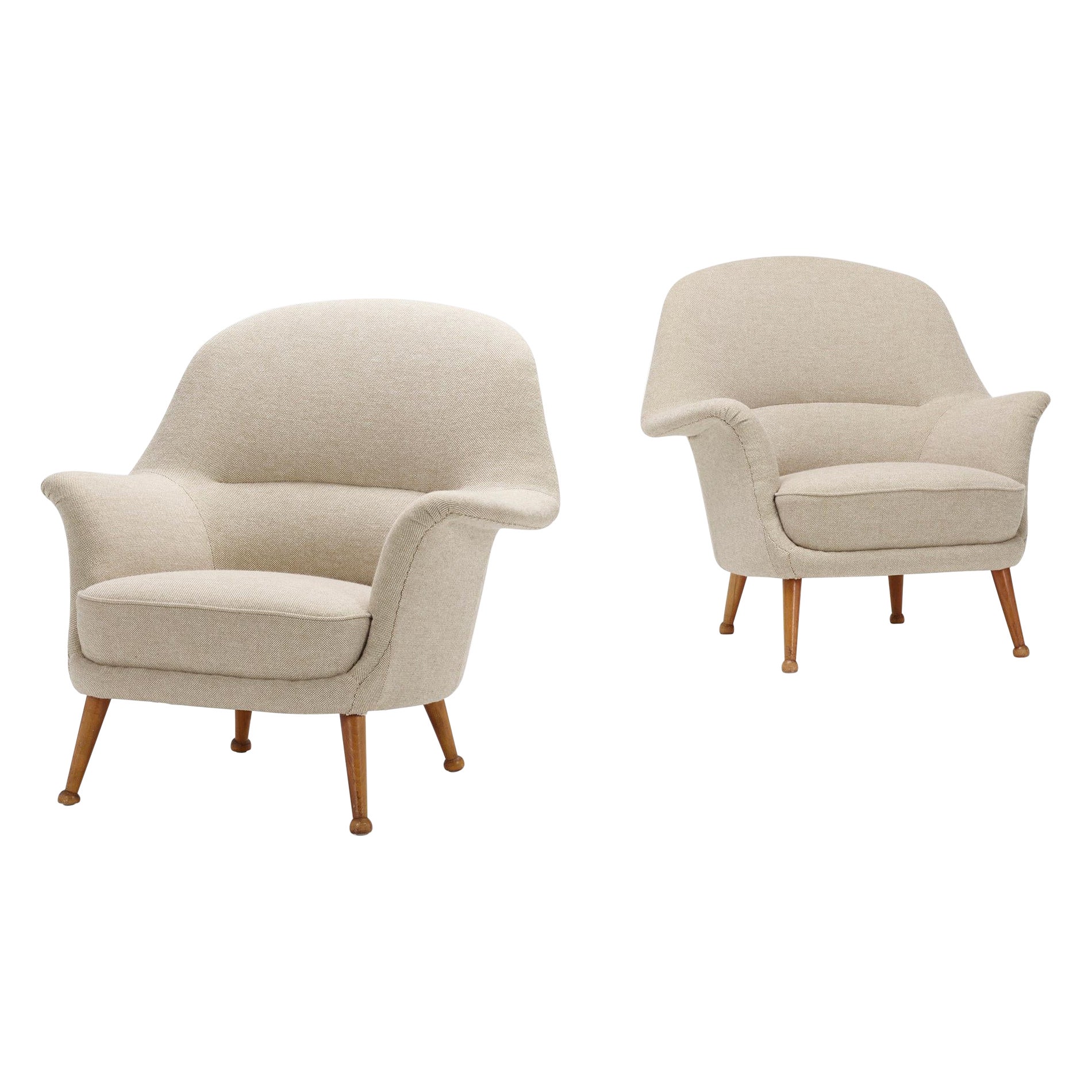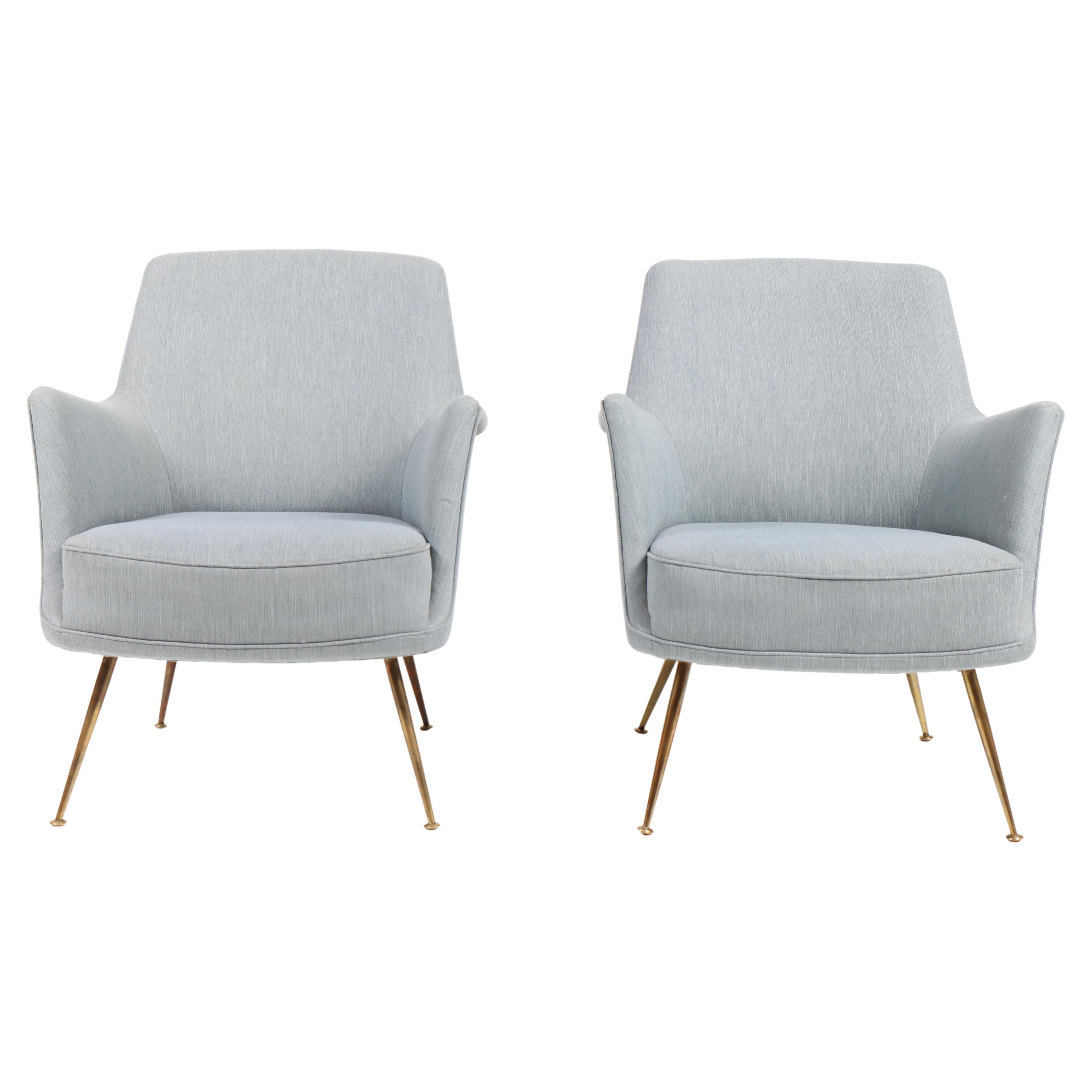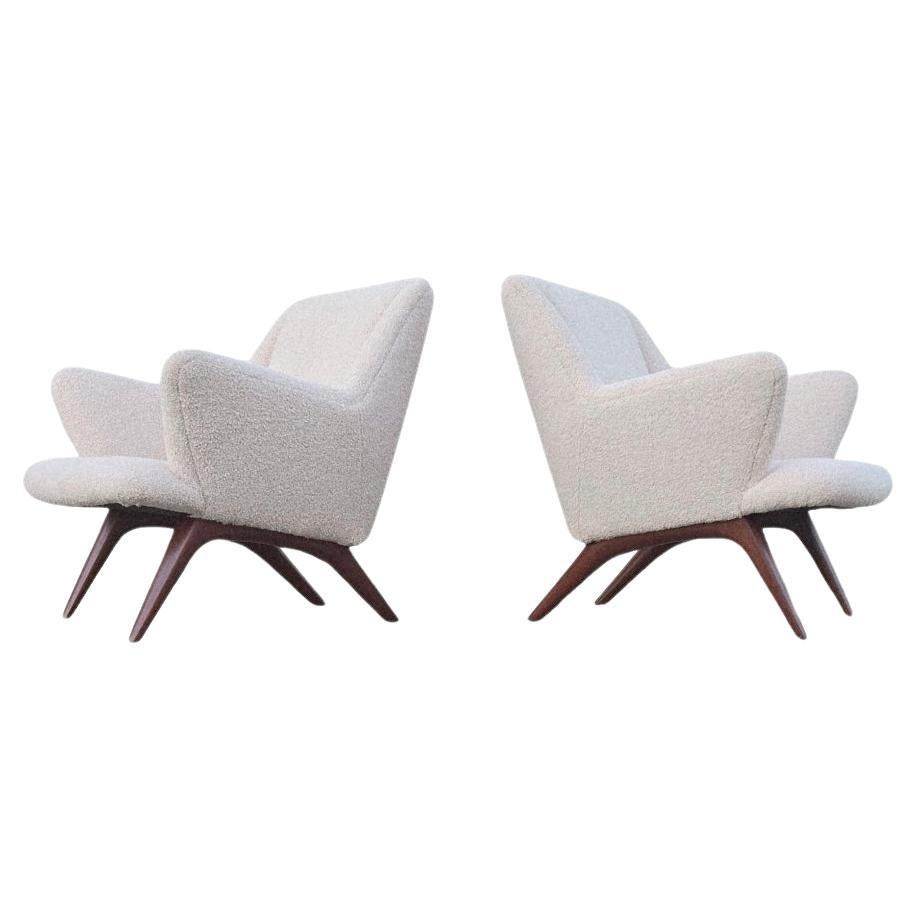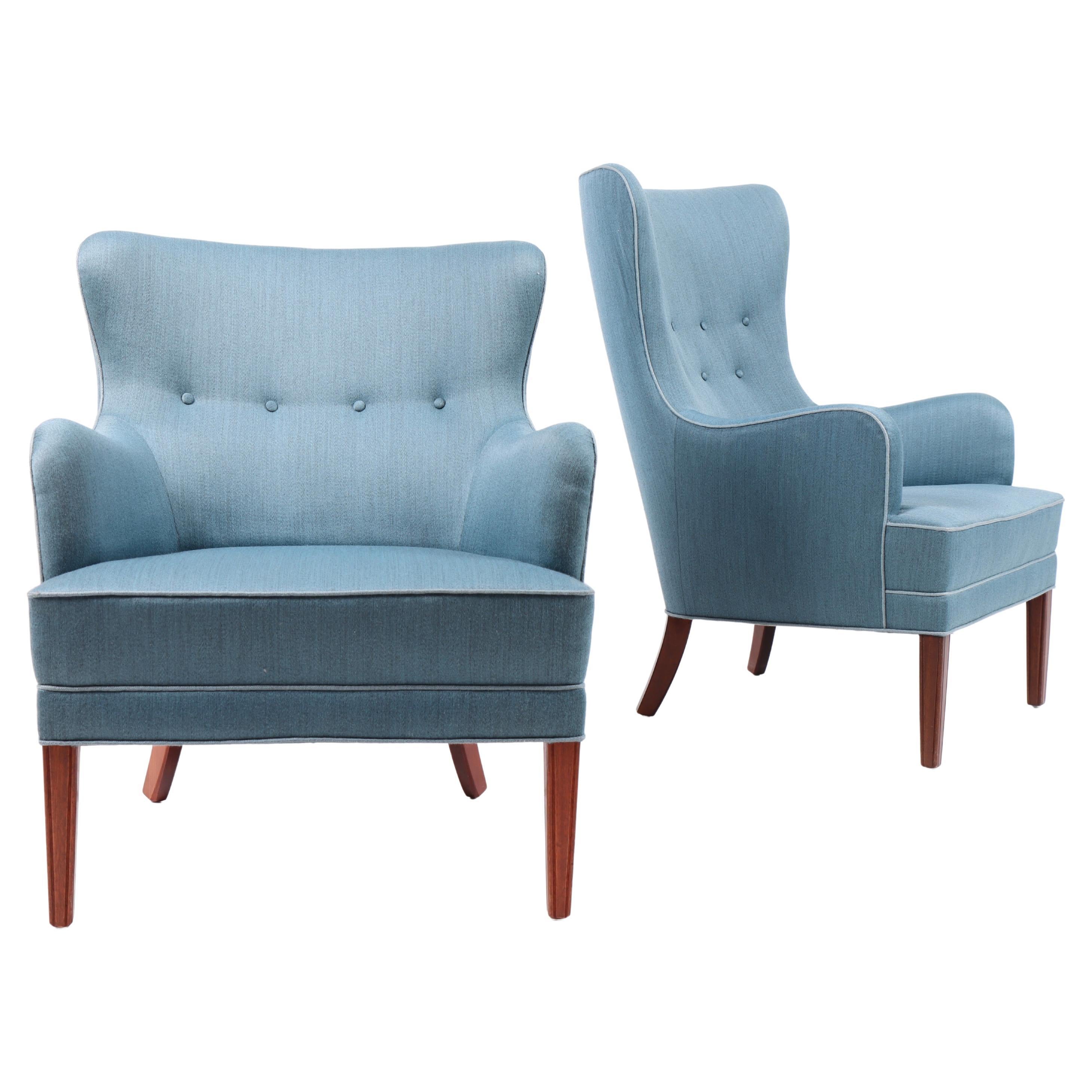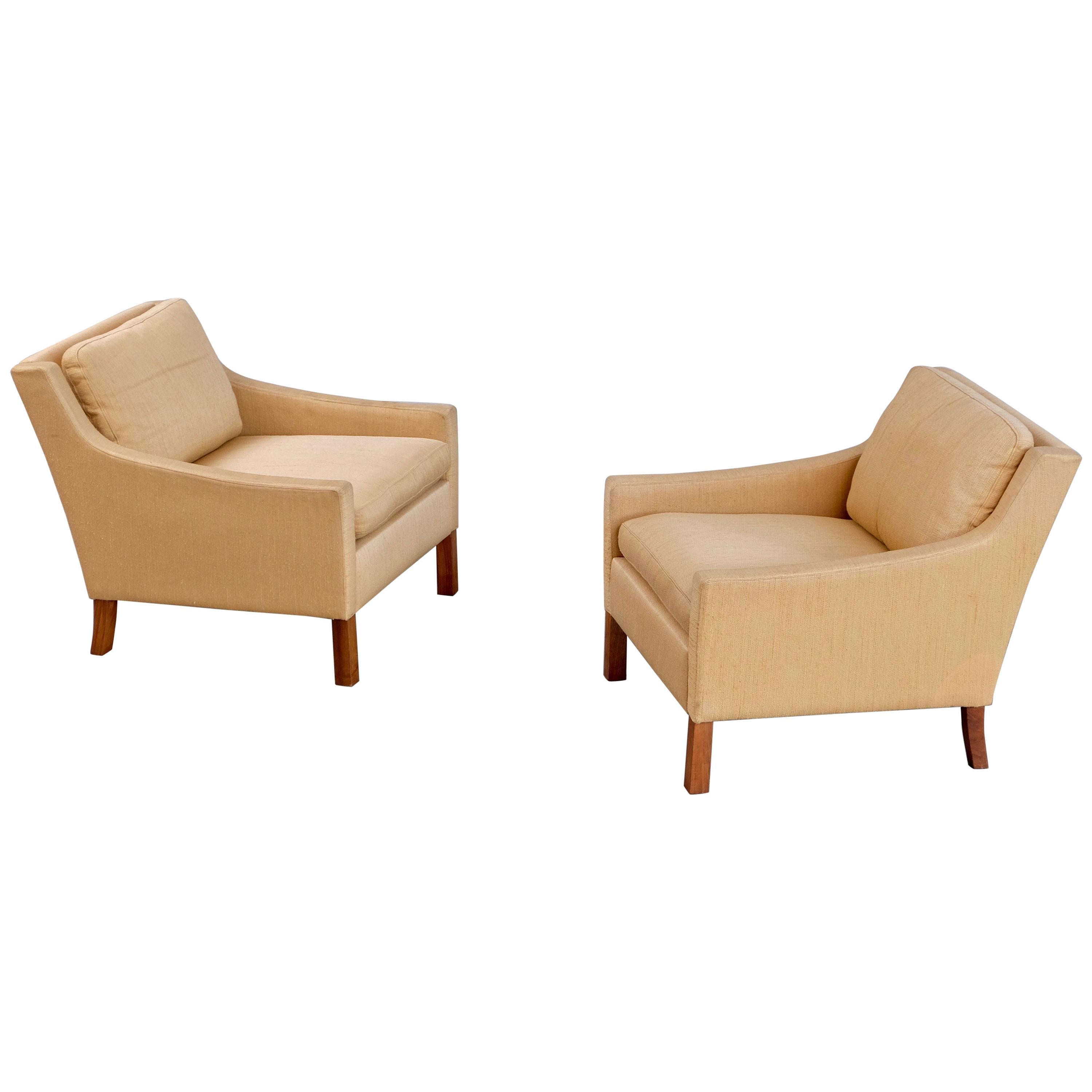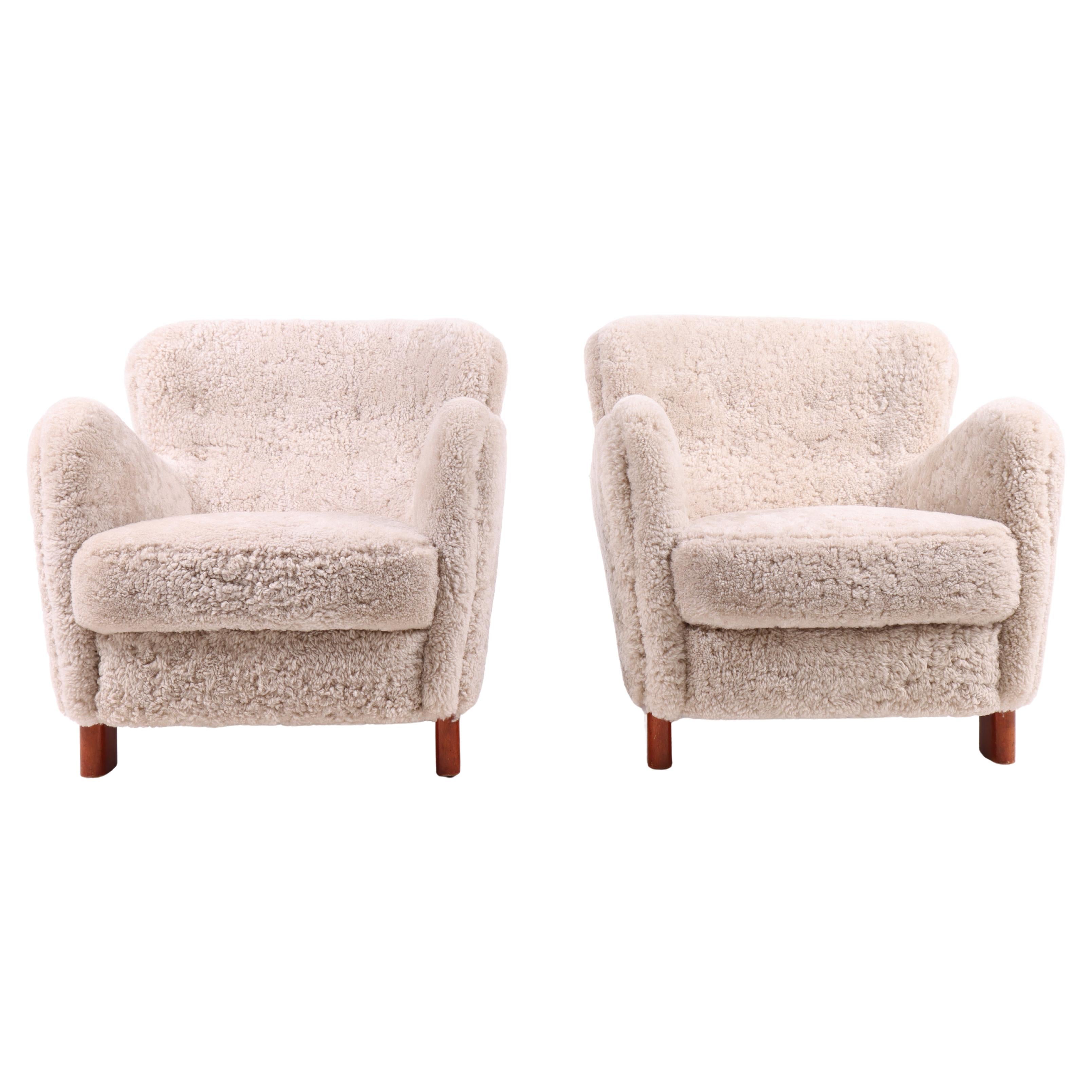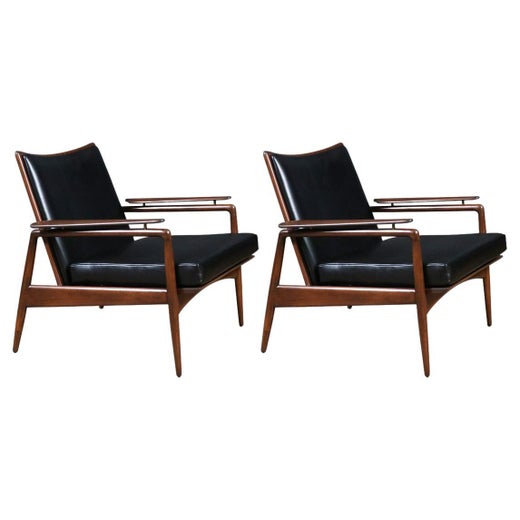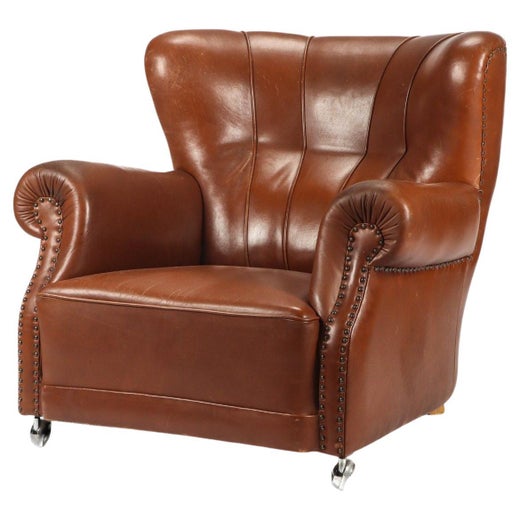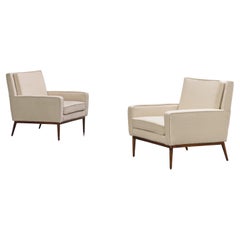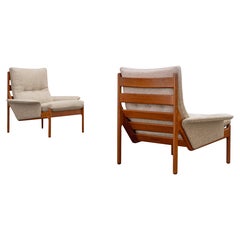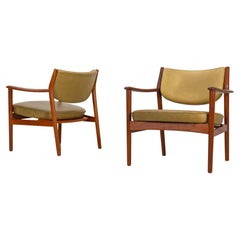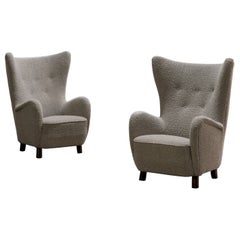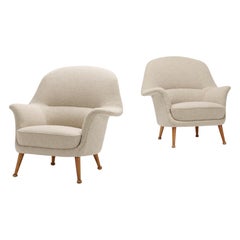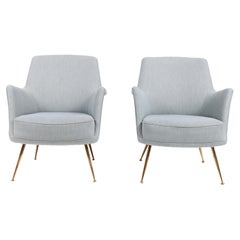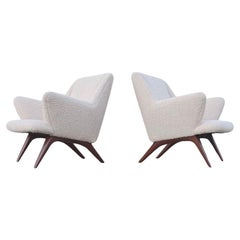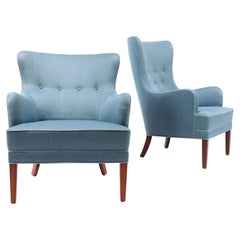Rare Pair of Lounge Chairs by Ib Kofod Larsen for Fritz Hansen, 1959
About the Item
- Creator:Fritz Hansen (Manufacturer),Ib Kofod-Larsen (Designer)
- Dimensions:Height: 33.86 in (86 cm)Width: 36.62 in (93 cm)Depth: 31.5 in (80 cm)Seat Height: 16.15 in (41 cm)
- Sold As:Set of 2
- Style:Mid-Century Modern (Of the Period)
- Materials and Techniques:
- Place of Origin:
- Period:
- Date of Manufacture:1959
- Condition:Reupholstered.
- Seller Location:Rosendahl, DE
- Reference Number:1stDibs: LU5894229886562
Ib Kofod-Larsen
Furniture maker and architect Ib Kofod-Larsen was one of the greatest design minds to emerge from mid-century Denmark, and his impact was felt across the world, especially in the United States. Kofod-Larsen, who is known for his exemplary seating, tables and storage solutions, understood that the attention to detail, quality materials and functional design ethos of the Scandinavian modernism style he followed would become part of a major international movement.
Due to his foresight and innovation, Kofod-Larsen was one of the best-selling Danish designers in the U.S. in the 1950s, when mid-century modernism was at its most popular.
Originally trained as a cabinetmaker, Kofod-Larsen later studied at the Royal Danish Academy of Fine Arts and was most interested in designing practical yet graceful furniture, although he also dabbled in things like wallpaper and textiles. He favored natural grains and woods like teak and rosewood combined with leather, steel and fabric upholsteries to create inviting pieces. Working with manufacturers such as Faarup Møbelfabrik, Christensen & Larsen and Bovenkamp, he brought his sculptural aesthetic to the world.
Some of his seating designs have earned legendary status: The U-56 chair (1956) was renamed the Elizabeth because England’s Queen Elizabeth II is said to have picked up a pair during a 1958 trip to Denmark. With OPE Möbler, he created the Seal chair (1956) with a wooden frame shaped around leather upholstery. The sculptural Penguin chair (1953), produced by Selig and named for its curved back, became Denmark’s most frequently exported piece of furniture to the U.S. at the time. Its bentwood shell echoes the work of Kofod-Larsen’s modernist contemporaries Eero Saarinen and Charles and Ray Eames, while its options as a dining, lounging and rocking chair offer versatility for the home.
As mid-century modern furniture experiences a fresh wave of popularity in the U.S. — although, one could argue that it never really went away — Kofod-Larsen’s timeless pieces are among the most coveted vintage finds. Several of his designs continue to be produced, such as the Penguin chair, which has been manufactured by Brdr. Petersen since 2012.
Find vintage Ib Kofod-Larsen furniture today on 1stDibs.
Fritz Hansen
When the Copenhagen-based furniture maker Fritz Hansen opened for business more than 140 years ago, the company — which today styles itself The Republic of Fritz Hansen — adhered to the traditional, time-honored Danish values of craftsmanship in woodworking and joinery. Yet thanks to the postwar innovations of Arne Jacobsen and others, Fritz Hansen would become the country’s leader in Scandinavian modern design using new, forward-looking materials and methods.
Fritz Hansen started his company in 1872, specializing in the manufacture of small furniture parts. In 1915, the firm became the first in Denmark to make chairs using steam-bent wood (a technique most familiar from birch used in the ubiquitous café chairs by Austrian maker Thonet). At the time, Fritz Hansen was best known for seating that featured curved legs and curlicue splats and referenced 18th-century Chippendale designs.
In the next few decades, the company promoted simple, plain chairs with slatted backs and cane or rush seats designed by such proto-modernist masters as Kaare Klint and Søren Hansen. Still, the most aesthetically striking piece Fritz Hansen produced in the first half of the 20th century was arguably the China chair of 1944 by Hans Wegner — and that piece, with its yoke-shaped bentwood back- and armrest, was based on seating manufactured in China during the Ming dynasty. (Wegner was moved by portraits he’d seen of Danish merchants in the Chinese chairs.)
Everything changed in 1952 with Arne Jacobsen’s Ant chair. The collaboration between the architect and Fritz Hansen officially originated in 1934 — that year, Jacobsen created his inaugural piece for the manufacturer, the solid beechwood Bellevue chair for a restaurant commission. The Ant chair, however, was the breakthrough.
With assistance from his then-apprentice Verner Panton, Jacobsen designed the Ant chair for the cafeteria of a Danish healthcare company called Novo Nordisk. The chair was composed of a seat and backrest formed from a single piece of molded plywood attached, in its original iteration, to three tubular metal legs. Its silhouette suggests the shape of the insect’s body, and the lightweight, stackable chair and its biomorphic form became an international hit.
Jacobsen followed with more plywood successes, such as the Grand Prix chair of 1957. The following year he designed the SAS Royal Hotel in Copenhagen and its furnishings, including the Egg chair and the Swan chair. Those two upholstered pieces, with their lush, organic frames made of fiberglass-reinforced polyurethane, have become the two chairs most emblematic of mid-20th-century cool. Moreover, the Egg and Swan led Fritz Hansen to fully embrace new man-made materials, like foam, plastic and steel wire used to realize the avant-garde creations of later generations of designers with whom the firm collaborated, such as Piet Hein, Jørn Utzon (the architect of the Sydney Opera House) and Verner Panton. If the Fritz Hansen of 1872 would not now recognize his company, today’s connoisseurs certainly do.
Find a collection of vintage Fritz Hansen tables, lounge chairs, sofas and other furniture on 1stDibs.
- ShippingRetrieving quote...Shipping from: Rosendahl, Germany
- Return Policy
More From This Seller
View AllMid-20th Century American Mid-Century Modern Lounge Chairs
Wool, Wood
Mid-20th Century Danish Scandinavian Modern Sofas
Fabric, Teak
Mid-20th Century Norwegian Scandinavian Modern Lounge Chairs
Leather, Teak
Mid-20th Century Danish Scandinavian Modern Wingback Chairs
Fabric, Beech
Mid-20th Century Danish Scandinavian Modern Lounge Chairs
Wool, Beech
Mid-20th Century French Mid-Century Modern Lounge Chairs
Oak
You May Also Like
20th Century Swedish Chairs
Upholstery
Vintage 1960s Danish Scandinavian Modern Lounge Chairs
Leather, Oak
20th Century Danish Mid-Century Modern Lounge Chairs
Upholstery, Wood, Teak
Vintage 1950s Danish Mid-Century Modern Lounge Chairs
Fabric, Mahogany
Vintage 1960s Swedish Scandinavian Modern Armchairs
Fabric
Vintage 1940s Danish Scandinavian Modern Lounge Chairs
Sheepskin
